History
 Maybe they were just wanting to be home for Christmas, and not knowing exactly how long it would take…while hiding out from the law, that is…the Texas Seven decided to get a jump start on the journey. No, probably not. It wasn’t Christmas with loved ones that was on their minds…it was freedom. On December 13, 2000, seven prisoners dubbed the “Texas Seven” by the media, broke out of maximum-security prison in South Texas, setting off a massive six-week manhunt. The prisoners were Joseph Christopher Garcia, Randy Ethan Halprin, Larry James Harper, Patrick Henry Murphy Jr, Donald Keith Newbury, George Angel Rivas Jr, and Michael Anthony Rodriguez. The escapees overpowered civilian employees and prison guards in the maintenance shop where they worked and stole clothing, guns, and a vehicle. The men left a note saying: “You haven’t heard the last of us yet,” and they were right. These men were convicted of crimes like murder, rape, and robbery. They were set to be executed soon, so they had nothing to lose.
Maybe they were just wanting to be home for Christmas, and not knowing exactly how long it would take…while hiding out from the law, that is…the Texas Seven decided to get a jump start on the journey. No, probably not. It wasn’t Christmas with loved ones that was on their minds…it was freedom. On December 13, 2000, seven prisoners dubbed the “Texas Seven” by the media, broke out of maximum-security prison in South Texas, setting off a massive six-week manhunt. The prisoners were Joseph Christopher Garcia, Randy Ethan Halprin, Larry James Harper, Patrick Henry Murphy Jr, Donald Keith Newbury, George Angel Rivas Jr, and Michael Anthony Rodriguez. The escapees overpowered civilian employees and prison guards in the maintenance shop where they worked and stole clothing, guns, and a vehicle. The men left a note saying: “You haven’t heard the last of us yet,” and they were right. These men were convicted of crimes like murder, rape, and robbery. They were set to be executed soon, so they had nothing to lose.
These were not the kind of people that anyone wanted to have running around the state…or anywhere outside of prison walls. Soon after escaping from the Connally Unit lockup in Kenedy, Texas, the fugitives picked up another getaway vehicle. This one provided by the father of one of the men. They robbed a Radio Shack store in Pearland, Texas, coming out with cash and police scanners. On Christmas Eve, the escapees struck a sporting-goods store in Irving, Texas, where they stole a large amount of cash and weapons. In the process, the men killed police officer Aubrey Hawkins, shooting him multiple times with multiple weapons and running him over. Now they really had nothing to lose. Now, they were cop killers on top of everything else. It looked like it was time to get out of Dodge…or in this case, Texas.
The Texas Seven headed to Colorado, where they purchased a motor home and told people they were Christian missionaries. They rented a spot at a trailer park near Woodland Park, Colorado. They were there about a month before things started to fall apart. On January 22, 2001, after seeing the “Texas Seven” profiled on the TV program America’s Most Wanted, someone tipped off the police to the group of seven “missionaries” near Woodland Park. During the raid, ringleader George Rivas was captured along with three of the other men. Larry James Harper decided that he was not going back to prison, so he committed suicide after being surrounded by 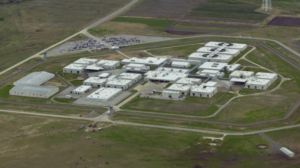 police. Two days later, law enforcement officials closed in on the two remaining escapees at a hotel in Colorado Springs. A standoff ensued, during which the fugitives conducted phone interviews with a TV news station and claimed their escape was a protest against Texas’ criminal justice system. Someone always has to add a bit of drama to justify their new crimes. There was no evidence indicating their claim was justified. The men then surrendered to authorities. Their crime spree was over. Of the six remaining, four have since been executed. Randy Ethan Halprin and Patrick Henry Murphy Jr are currently back at Polunsky Unit in Livingston, Texas on Death Row awaiting execution.
police. Two days later, law enforcement officials closed in on the two remaining escapees at a hotel in Colorado Springs. A standoff ensued, during which the fugitives conducted phone interviews with a TV news station and claimed their escape was a protest against Texas’ criminal justice system. Someone always has to add a bit of drama to justify their new crimes. There was no evidence indicating their claim was justified. The men then surrendered to authorities. Their crime spree was over. Of the six remaining, four have since been executed. Randy Ethan Halprin and Patrick Henry Murphy Jr are currently back at Polunsky Unit in Livingston, Texas on Death Row awaiting execution.

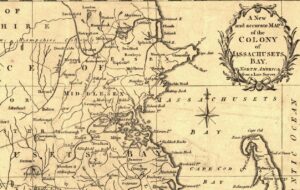 In the late 1600s, Britain and France both owned property in North America, and they were prone to periodic attacks on the colonies belonging to the other. On December 10, 1690, when the Massachusetts Bay Colony launched an ill-fated attack on Quebec, the result was a near-mutiny that forced the Massachusetts Bay Colony to issue the first paper currency in the history of the Western Hemisphere.
In the late 1600s, Britain and France both owned property in North America, and they were prone to periodic attacks on the colonies belonging to the other. On December 10, 1690, when the Massachusetts Bay Colony launched an ill-fated attack on Quebec, the result was a near-mutiny that forced the Massachusetts Bay Colony to issue the first paper currency in the history of the Western Hemisphere.
Sometimes, these “little skirmishes” put the governments in a position of a cash flow problem. They sometimes had to resort to IOUs to pay the men. In 1690, during one such war, Governor William Phips of Britain’s Massachusetts Bay Colony made a promise to his men that he could not keep. Phips was just back from a successful invasion of the French colony of Acadia. When it went so well, he decided to raid Quebec City. For their participation, Phips promised his volunteer troops half the loot. This loot was to be in addition to their usual pay. In those days, the soldiers were usually paid in coins, but sometimes shortages of official currency in the colonies forced armies to temporarily issue IOUs. Sometimes, even that was difficult, for lack of paper, so in one case, the men were actually paid with cut-up playing cards. The troops were then allowed to exchange the playing cards for goods and services until they received their actual pay.
As to Phips…he found himself with a rather large dilemma, because while he made a grand promise, the raid was a failure, when he didn’t manage to take the city. He was forced to return to Massachusetts with a damaged fleet and no treasure. With a shortage of coins and nothing else to pay the troops with, Phips faced a potential mutiny. So…out of options, on December 10th, 1690, the General Court of Massachusetts ordered the printing of a limited amount of government-backed, paper currency to pay the soldiers. It was the first such printing of paper money in North America. A few months later, with tax season approaching, a law was passed removing the limit on how much currency could be printed, calling for the immediate printing of more, and permitting the use of paper currency for the payment of taxes, which seems odd considering it had no value.
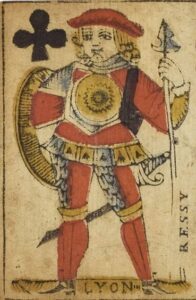
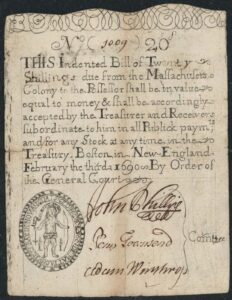 People didn’t trust the paper currency, making it unpopular for anything except paying taxes and before long, it was phased out. Nevertheless, within a few years, paper currency returned to Massachusetts. The Bank of England began issuing banknotes in 1695, also to pay for war against the French, and they became increasingly common throughout the 18th Century. Paper money has continued to cause controversy throughout the early history of the United States, and in many cases, remains so to this day. It was tied to the value of gold for a surprisingly long time, but in 1973 President Richard Nixon officially ended the international convertibility of the US dollar into gold. The printing of paper currency has always been a bit of a shady venture, because it is almost always done without the backing of gold. Without gold to back up the value of the paper currency, the economy is in danger.
People didn’t trust the paper currency, making it unpopular for anything except paying taxes and before long, it was phased out. Nevertheless, within a few years, paper currency returned to Massachusetts. The Bank of England began issuing banknotes in 1695, also to pay for war against the French, and they became increasingly common throughout the 18th Century. Paper money has continued to cause controversy throughout the early history of the United States, and in many cases, remains so to this day. It was tied to the value of gold for a surprisingly long time, but in 1973 President Richard Nixon officially ended the international convertibility of the US dollar into gold. The printing of paper currency has always been a bit of a shady venture, because it is almost always done without the backing of gold. Without gold to back up the value of the paper currency, the economy is in danger.
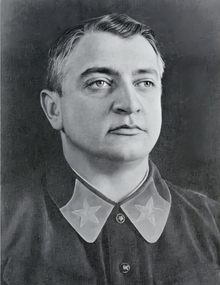
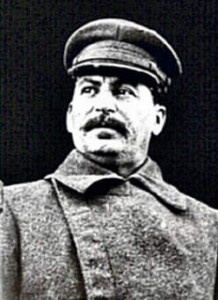 Mikhail Tukhachevsky saw it coming, really. Sometimes it’s rather sad to be right about certain things. Tukhachevsky had been nicknamed the “Red Napoleon,” meaning that he was a popular Soviet military leader in Stalin’s Red Army. Tukhachevsky had no idea just how much more important the ideology would be to Stalin, than loyalty, ability, or anything else.
Mikhail Tukhachevsky saw it coming, really. Sometimes it’s rather sad to be right about certain things. Tukhachevsky had been nicknamed the “Red Napoleon,” meaning that he was a popular Soviet military leader in Stalin’s Red Army. Tukhachevsky had no idea just how much more important the ideology would be to Stalin, than loyalty, ability, or anything else.
After his service in World War I of 1914-1917 and in the Russian Civil War of 1917-1923, from 1920 to 1921 Tukhachevsky commanded the Soviet Western Front in the Polish–Soviet War. He was moving up the ranks, and with the Soviet forces under his command, he successfully repelled the Polish forces from Western Ukraine, driving them back into Poland. Nevertheless, the Red Army suffered defeat outside of Warsaw, and the war ended in a Soviet defeat.
Tukhachevsky went on to serve as chief of staff of the Red Army from 1925 through 1928, as assistant in the People’s Commissariat of Defense after 1934, and as commander of the Volga Military District in 1937. He achieved the rank of Marshal of the Soviet Union in 1935. Still, all of that did not protect him, in fact it put him in more danger, because he was just a little way under Stalin, and that was not going to bode well for him.
Tukhachevsky was arrested in 1936, suspected of being a German spy. The charges included Tukhachevsky’s supposed plot to overthrow Stalin. After he was arrested, the guards coerced a confession out of him. This was at the very beginning of The Great Terror, a term which historians have borrowed from the French Revolution. It refers to the paroxysm of state-organized bloodshed that overwhelmed the Communist Party and Soviet society during the years 1936-1938. It was also known as the Great Purges.
During this time, Stalin actually had over a million of his own soldiers killed for imagined wrongs. Stalin was, in 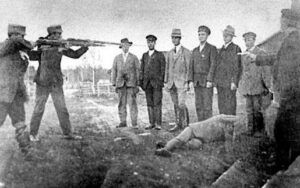 reality, half crazy. He was known to pluck a live chicken, just to see the reaction from his men. It wasn’t a really big stretch to move to killing soldiers or civilians, so the Great Terror wasn’t too far out there for him. As for Tukhachevsky, Stalin sentenced him to death in March 1938. He was executed on June 12, 1937. Even the men who had to judge the soldiers in those “sham” trials, were not free from danger. One of them, Ivan Belov said, “Tomorrow, I shall be put in the same place.” Belov was right. He was arrested on January 7, 1938. He was later executed as well. I can’t imagine how insane Stalin must have been. When you think about it, most of the men and women who were under Stalin’s rule, were too terrified to be disloyal.
reality, half crazy. He was known to pluck a live chicken, just to see the reaction from his men. It wasn’t a really big stretch to move to killing soldiers or civilians, so the Great Terror wasn’t too far out there for him. As for Tukhachevsky, Stalin sentenced him to death in March 1938. He was executed on June 12, 1937. Even the men who had to judge the soldiers in those “sham” trials, were not free from danger. One of them, Ivan Belov said, “Tomorrow, I shall be put in the same place.” Belov was right. He was arrested on January 7, 1938. He was later executed as well. I can’t imagine how insane Stalin must have been. When you think about it, most of the men and women who were under Stalin’s rule, were too terrified to be disloyal.
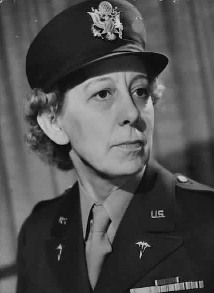 The attack on Pearl Harbor, on December 7, 1941, rocked the United States. It was so unexpected, but while it brought so much destruction, it also brought out so many heroes too. Orders did not need to be given, everyone simply jumped into action, without being told. Still, the destruction was so overwhelming, and the attack just kept coming. People were dodging bullets and bombs, as well as flying debris and suicide bombers. A heavy, choking, acrid smoke filled the air, making it very hard to breathe. There would be making deaths that day, but there would also be heroes.
The attack on Pearl Harbor, on December 7, 1941, rocked the United States. It was so unexpected, but while it brought so much destruction, it also brought out so many heroes too. Orders did not need to be given, everyone simply jumped into action, without being told. Still, the destruction was so overwhelming, and the attack just kept coming. People were dodging bullets and bombs, as well as flying debris and suicide bombers. A heavy, choking, acrid smoke filled the air, making it very hard to breathe. There would be making deaths that day, but there would also be heroes.
Lieutenant Annie G Fox was stationed at Hickam Airfield in Hawaii on December 7, 1941, and she was the chief nurse on duty that morning. When the attack began, she sprang into action to tend to the injured and dying service personnel on the base. For her outstanding performance, Fox was recommended for and awarded the Purple Heart, but she was not injured during the attack. Fox was presented the Purple Heart on October 26, 1942, at Hickam Field. Colonel William Boyd, Post Commander read the 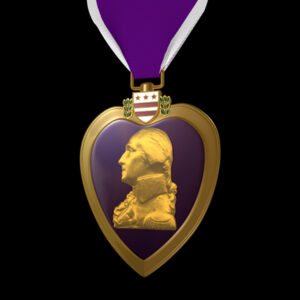 citation which was commanded by Brigadier General W E Farthing and signed by Colonel L P Turner, Air Corps Executive Officer.
citation which was commanded by Brigadier General W E Farthing and signed by Colonel L P Turner, Air Corps Executive Officer.
Then, in 1944 in a horrible twist of fate, the rules for receiving the Purple Heart changed, and Fox no longer qualified. The recipient needed to have sustained battle wounds. Fox’s medal was rescinded. She received the Bronze Star instead. I can understand the reasons behind the change, but it seems wrong that her medal that was legitimately earned in 1941, could be taken back in 1944. It should have been grandfathered or something. Nevertheless, the Purple Heart was not returned.
Purple Heart or Bronze Star aside, Lieutenant Annie Fox showed great spirit that day. In the face of great 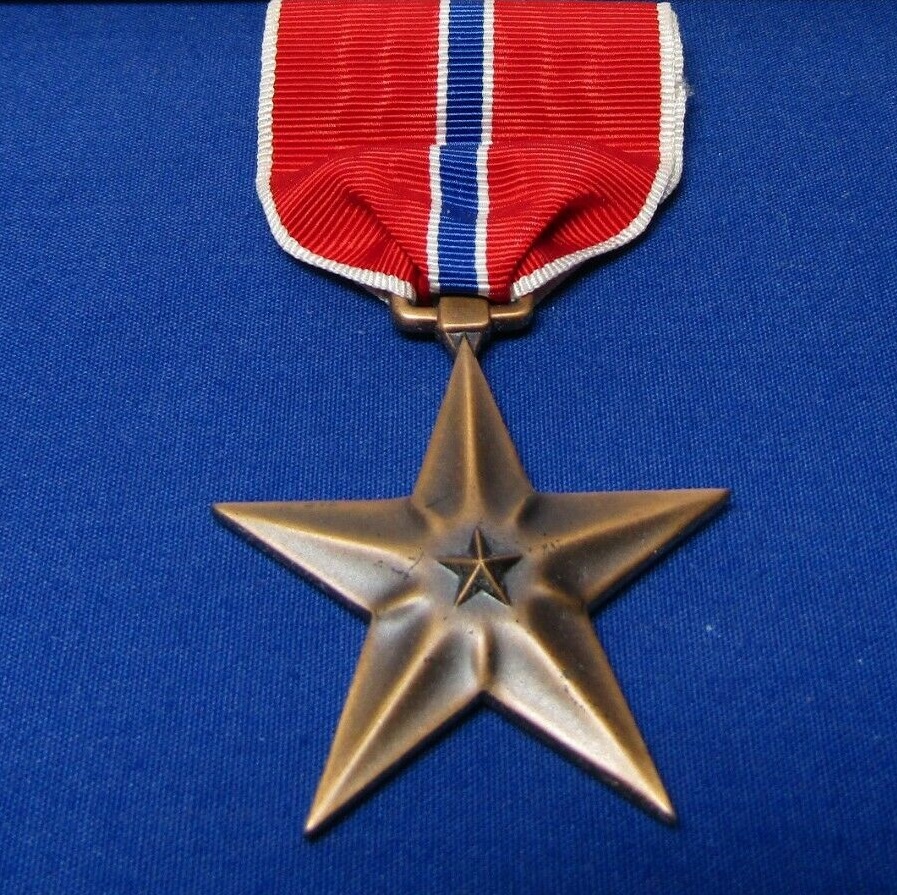 personal danger, she dodged the hail of bullets to reach many wounded people and she saved many lives. She could have been shot, bombed, breathed in poisonous gasses, or been hit by debris. It didn’t stop her. She saw the wounded, and she ran headlong into the danger, thereby saving her fellow man. Whether she was properly awarded the Purple Heart or not, she was definitely a hero.
personal danger, she dodged the hail of bullets to reach many wounded people and she saved many lives. She could have been shot, bombed, breathed in poisonous gasses, or been hit by debris. It didn’t stop her. She saw the wounded, and she ran headlong into the danger, thereby saving her fellow man. Whether she was properly awarded the Purple Heart or not, she was definitely a hero.
Annie Gayton Fox was born to Charles Fox and Deidamia (Gayton) Fox in East Pubnico, Nova Scotia, Canada, on August 4, 1893. She died at age 93 on January 20, 1987, in San Mateo County, California. Her years of service ran from July 3, 1918 through December 31, 1945. She retired as a Major in the US Army.
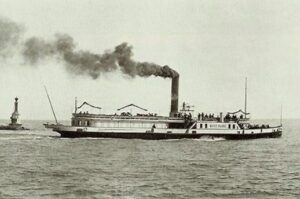 Disaster was eminent that December 6, 1917, and indeed, the disaster had already begun, but it was very likely to get far worse. Vincent Coleman and his co-worker, Chief Clerk William Lovett were working at the Richmond station where they received word that there was a crash between the French munitions ship, SS Mont-Blanc, and a Norwegian ship, SS Imo. A collision, in and of itself, would not have been any more serious than any other collision, except that the French munitions ship, was carrying a deadly cargo of high explosives. The likelihood of an explosion was the eminent disaster that was waiting to happen.
Disaster was eminent that December 6, 1917, and indeed, the disaster had already begun, but it was very likely to get far worse. Vincent Coleman and his co-worker, Chief Clerk William Lovett were working at the Richmond station where they received word that there was a crash between the French munitions ship, SS Mont-Blanc, and a Norwegian ship, SS Imo. A collision, in and of itself, would not have been any more serious than any other collision, except that the French munitions ship, was carrying a deadly cargo of high explosives. The likelihood of an explosion was the eminent disaster that was waiting to happen.
That day, in what was called the Halifax Explosion, Coleman is remembered as one of the heroic figures, because of his quick-thinking message to an oncoming train to stop and remain out of range before the explosion. Coleman knew what was coming, and he saved many lives as a result of holding back that train. born on March 13th, 1872, was a train dispatcher for the Canadian Government  Railways. Moments after the collision, the SS Mont-Blanc caught fire and the crew abandoned the ship. Now it was up to Vincent, trying to hold back a sense of panic, to figure out what trains were going to be coming into Halifax. He knew they had to be warned.
Railways. Moments after the collision, the SS Mont-Blanc caught fire and the crew abandoned the ship. Now it was up to Vincent, trying to hold back a sense of panic, to figure out what trains were going to be coming into Halifax. He knew they had to be warned.
Part of the reason for such a panicked state was that the French ship had drifted from the middle of the channel to the pier. While still burning, she beached herself on the shore in a matter of minutes. The captain warned Coleman of the deadly cargo on the ship, and Coleman flew into action. He immediately sent a telegraph to the Number 10 overnight express train that was coming in from Saint John, New Brunswick, carrying over 300 passengers, telling them to stop where they were and remain there until further notice, thereby saving the lives of passengers and crew. Then, Lovett and Coleman quickly evacuated their station, but Coleman couldn’t stay 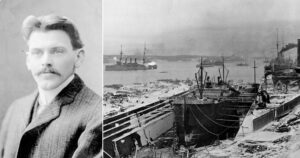 away. There was too much danger. Coleman returned to the station and continued to warn trains all the way to Truro in order to stop them from any closer to the scene. Coleman’s morse was code message was this: “Hold up the train. Ammunition ship afire in harbor making for Pier 6 and will explode. Guess this will be my last message. Good-bye boys.” While Coleman’s message stopped the Number 10 train, saving the lives of 300 people, and also likely saved other lives with his warnings to stay back, he lost his own life in the endeavor when the ship exploded. Staying at the station was a courageous act that cost Coleman his life.
away. There was too much danger. Coleman returned to the station and continued to warn trains all the way to Truro in order to stop them from any closer to the scene. Coleman’s morse was code message was this: “Hold up the train. Ammunition ship afire in harbor making for Pier 6 and will explode. Guess this will be my last message. Good-bye boys.” While Coleman’s message stopped the Number 10 train, saving the lives of 300 people, and also likely saved other lives with his warnings to stay back, he lost his own life in the endeavor when the ship exploded. Staying at the station was a courageous act that cost Coleman his life.
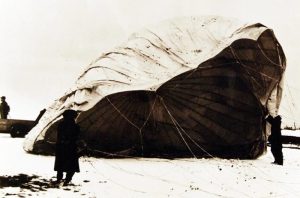 Thermopolis, Wyoming…a favorite destination for my husband and me. We take a trip there every year for our anniversary. I suppose that for many people, Thermopolis would seem too quiet, too small, and too little to do, but for us it is just perfect. With its hot springs and river walk trail, it is just perfect for us, and the hot spring ponds filled with goldfish of a size you simply cannot imagine until you see them. I’ve been told that they came from people getting rid of the small goldfish, and the warm water, along with the pond size, allowed the smaller goldfish to grow quite large. Thermopolis also had a dinosaur museum, although we have never been there. We go to the area for the hot tub and the trail for sure.
Thermopolis, Wyoming…a favorite destination for my husband and me. We take a trip there every year for our anniversary. I suppose that for many people, Thermopolis would seem too quiet, too small, and too little to do, but for us it is just perfect. With its hot springs and river walk trail, it is just perfect for us, and the hot spring ponds filled with goldfish of a size you simply cannot imagine until you see them. I’ve been told that they came from people getting rid of the small goldfish, and the warm water, along with the pond size, allowed the smaller goldfish to grow quite large. Thermopolis also had a dinosaur museum, although we have never been there. We go to the area for the hot tub and the trail for sure.
While Thermopolis might seem like the safest little out of the way place, there was a time when it was actually a target for an attack. During World War II, the Japanese set their sights on Wyoming. It makes little sense to me, but it was the target they chose. During World War II, the Japanese were experimenting with a new kind of bomb. It really wasn’t the greatest idea, but they did send some of them out. The problem with balloons is that it’s difficult to control where it is going…especially when it is unmanned. It’s hard to say what the exact target was, but on December 5, 1944, coal miners outside of Thermopolis heard something from the skies above and saw an explosion streak across the dark sky. When the object landed, it was discovered to be a Japanese Fu-Go Balloon Bomb. Though the Japanese launched 9,300 of these bombs, only about 300 made it to land, and the Thermopolis bomb was the first one to reach the United States. 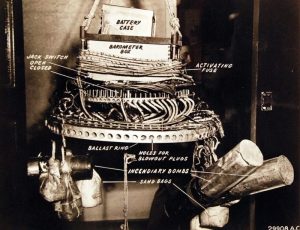
I find it hard to believe that the first Fu-Go Balloon Bomb made it all the way to Wyoming before exploding, when the only Fu-Go Balloon Bomb to actually kill anyone was one that landed near Bly, Oregon on May 5, 1945, that killed a pregnant woman and five children after they approached the unexploded balloon that had landed nearby. The balloon exploded as they investigated it. After that, the public was warned to stay away from the objects, but the news stories were still scarce. In fact, the Japanese only ever learned of the landing in Wyoming!! I have no idea how the media held themselves back.
Landing so many balloons in America was an impressive feat because the inter-continental attack was considered impossible at the time. Whatever the Japanese had hoped to gain by this relatively ineffective “bomb” is unknown, but it was a real failure. My guess is that most of them exploded over the ocean, doing no damage. Nevertheless, these massive balloons were a bit of a marvel…so to speak. They had to carry more than 1,000 pounds across the ocean, which was no easy task, especially for technology at the time. The fact that any of them made it here was impressive, I suppose. They were impressive balloons from a technologic standpoint. They were controlled by altimeters that kept the balloon in the newly discovered jet stream until it was over America, where it would fall to the ground and detonate…or so was the plan. The goal of the mission was to cause panic and fear in the United States, but a media blackout meant that these landings and 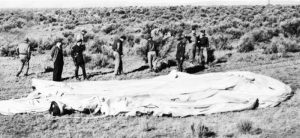 explosions went unreported. A blackout was the only way.
explosions went unreported. A blackout was the only way.
These attacks were actually quite amazing, because they were the longest ranged assaults in the history of warfare. It wasn’t until 1982 (during the Falkland Islands War) that the distance was topped. Today, the story of the Fu-Go Balloon Bombing is rarely told in Wyoming outside of Thermopolis, where it has supposedly become local folklore. Strange that I have never heard of it, even with the many years we have been spending our anniversary there. I will most definitely have to ask about it the next time we go.
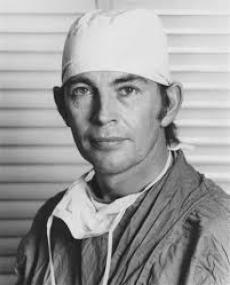 For a heart surgeon, there comes a point with a heart, when the diseased part is bad enough that it can’t be fixed. No matter how hard he tries, it is going to take a miracle to save the owner of that heart. That was the place that Dr Christiaan Neethling Barnard was facing in November 1967. His patient, 54-year-old Louis Washkansky was…well, dying, with little hope of survival. Heart transplants weren’t done every day like they are these days, and Barnard had told Mr and Mrs Washkansky that the operation had an 80% chance of success, an assessment which has been criticized as misleading, but by the same token, Mr Washkansky had no chance of survival without the transplant. Then, the opportunity presented itself, in the form of accident victim, Denise Darvall.
For a heart surgeon, there comes a point with a heart, when the diseased part is bad enough that it can’t be fixed. No matter how hard he tries, it is going to take a miracle to save the owner of that heart. That was the place that Dr Christiaan Neethling Barnard was facing in November 1967. His patient, 54-year-old Louis Washkansky was…well, dying, with little hope of survival. Heart transplants weren’t done every day like they are these days, and Barnard had told Mr and Mrs Washkansky that the operation had an 80% chance of success, an assessment which has been criticized as misleading, but by the same token, Mr Washkansky had no chance of survival without the transplant. Then, the opportunity presented itself, in the form of accident victim, Denise Darvall.
The time had come, and on December 3, 1967, Darvall’s heart was transplanted by Dr Bernard into Washkansky. As with any new procedure, there were the inevitable risks, and while Washkansky regained full consciousness and was able to talk easily with his wife, he developed pneumonia eighteen days later and because of his compromised immune system, due largely to the anti-rejection drugs, he died eighteen days later of pneumonia, largely brought on by the anti-rejection drugs that suppressed his immune system. Dr Bernard could have given up, but he did not. His second heart transplant patient, Philip Blaiberg received his new heart in 1968, and while his life after that was not long, he did live another year and a half. Of course, these days, the heart transplant patient has a much better prognosis because of how much medical procedures have improved.
Born in Beaufort West, Cape Province, South Africa, on November 8, 1922, Bernard studied medicine and practiced for several years in his native South Africa. As a young doctor, he experimented on dogs, which I suppose might make some people angry. Nevertheless, Barnard developed a remedy for the infant defect of intestinal atresia. Intestinal atresia refers to a part of the fetal bowel that is not developed, and the intestinal tract becomes partially or completely blocked (bowel obstruction). His technique saved the lives of ten babies in Cape Town and was adopted by surgeons in Britain and the United States.
In 1955, Bernard decided to travel to the United States to further his studies. He was initially assigned further 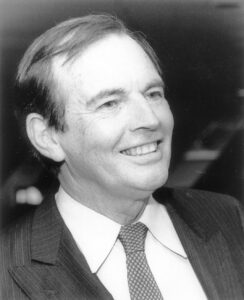 gastrointestinal work by Owen Harding Wangensteen at the University of Minnesota. Then, Bernard was introduced to the heart-lung machine, and was allowed to transfer to the service run by open heart surgery pioneer Walt Lillehei. After his study abroad, he returned to South Africa in 1958. Barnard was appointed head of the Department of Experimental Surgery at the Groote Schuur Hospital in Cape Town. After a long and successful career, Bernard retired as head of the Department of Cardiothoracic Surgery in Cape Town in 1983 after rheumatoid arthritis in his hands ended his surgical career. Still, he could not leave surgery completely alone. He became interested in anti-aging research, and in 1986 his reputation suffered when he promoted Glycel, an expensive “anti-aging” skin cream, whose approval was withdrawn by the United States Food and Drug Administration soon thereafter. During his remaining years, he established the Christiaan Barnard Foundation, which was dedicated to helping underprivileged children throughout the world. He died on September 2, 2001 at the age of 78 in Paphos, Cyprus after an asthma attack.
gastrointestinal work by Owen Harding Wangensteen at the University of Minnesota. Then, Bernard was introduced to the heart-lung machine, and was allowed to transfer to the service run by open heart surgery pioneer Walt Lillehei. After his study abroad, he returned to South Africa in 1958. Barnard was appointed head of the Department of Experimental Surgery at the Groote Schuur Hospital in Cape Town. After a long and successful career, Bernard retired as head of the Department of Cardiothoracic Surgery in Cape Town in 1983 after rheumatoid arthritis in his hands ended his surgical career. Still, he could not leave surgery completely alone. He became interested in anti-aging research, and in 1986 his reputation suffered when he promoted Glycel, an expensive “anti-aging” skin cream, whose approval was withdrawn by the United States Food and Drug Administration soon thereafter. During his remaining years, he established the Christiaan Barnard Foundation, which was dedicated to helping underprivileged children throughout the world. He died on September 2, 2001 at the age of 78 in Paphos, Cyprus after an asthma attack.
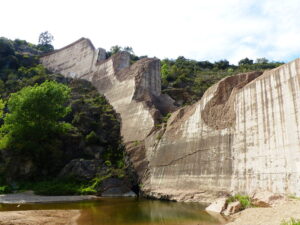
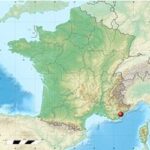 A strange thought, indeed, but Posthumous Marriage is not illegal in France…at least not since the Malpasset Dam disaster of December 2, 1959. While most of us would consider Posthumous Marriage to be a rather morbid idea, there are a couple of reasons that are considered legitimate reasons for the request for such a marriage to be granted. One such reason is, of course, a matter of deep emotional feelings for the lost fiancé. Another reason is to legitimize any children the couple already had, prior to the marriage…which I guess I can see, to a degree. There are rules that must be followed in order to have such a marriage approved…no matter what the reasons. The living partner must ask the deceased partner’s family for permission, and the invitations to the wedding must have already been sent out (showing intent from both members of the couple). The family can choose to allow, or not to allow the marriage, and if they do not agree, it is over. If family approval is given, the living partner must go before a judge to get legal permission to “marry” the deceased partner…who is usually represented at the service with a photograph. And…there are things that do not come with the marriage, such as any of the deceased partner’s property or money. In all reality, it is simply a symbolic event declaring their love for their partner. Nothing more!!
A strange thought, indeed, but Posthumous Marriage is not illegal in France…at least not since the Malpasset Dam disaster of December 2, 1959. While most of us would consider Posthumous Marriage to be a rather morbid idea, there are a couple of reasons that are considered legitimate reasons for the request for such a marriage to be granted. One such reason is, of course, a matter of deep emotional feelings for the lost fiancé. Another reason is to legitimize any children the couple already had, prior to the marriage…which I guess I can see, to a degree. There are rules that must be followed in order to have such a marriage approved…no matter what the reasons. The living partner must ask the deceased partner’s family for permission, and the invitations to the wedding must have already been sent out (showing intent from both members of the couple). The family can choose to allow, or not to allow the marriage, and if they do not agree, it is over. If family approval is given, the living partner must go before a judge to get legal permission to “marry” the deceased partner…who is usually represented at the service with a photograph. And…there are things that do not come with the marriage, such as any of the deceased partner’s property or money. In all reality, it is simply a symbolic event declaring their love for their partner. Nothing more!!
So how did such a strange idea get started in the first place. On December 2, 1959, the Malpasset Dam, an arch dam on the Reyran River, which is located approximately 4 miles north of Fréjus on the French Riviera (Côte d’Azur), Southern France, in the Var department collapsed, killing 423 people in the resulting flood. Signs of an imminent collapse began in November 1959, when a “trickle of clear water observed high on the right [side]” and then cracks noticed later in the month in the concrete apron at the dam toe. The dam was breached at 9:13pm on December 2, 1959. The break was partially due to rainfall and thus the rising level of water. By noon that day, the reservoir had reached its maximum level, and the guardian André Ferro asked for permission to release the excess water, but was denied the ability to do so until 6:00pm of that day. By then, the amount of water was so high that it took three hours to release only a few centimeters of water. The entire wall then collapsed leaving only a few blocks on the right bank. Pieces of the dam are still scattered throughout the area to this day. The damage amounted to an equivalent total of 68 million US dollars.
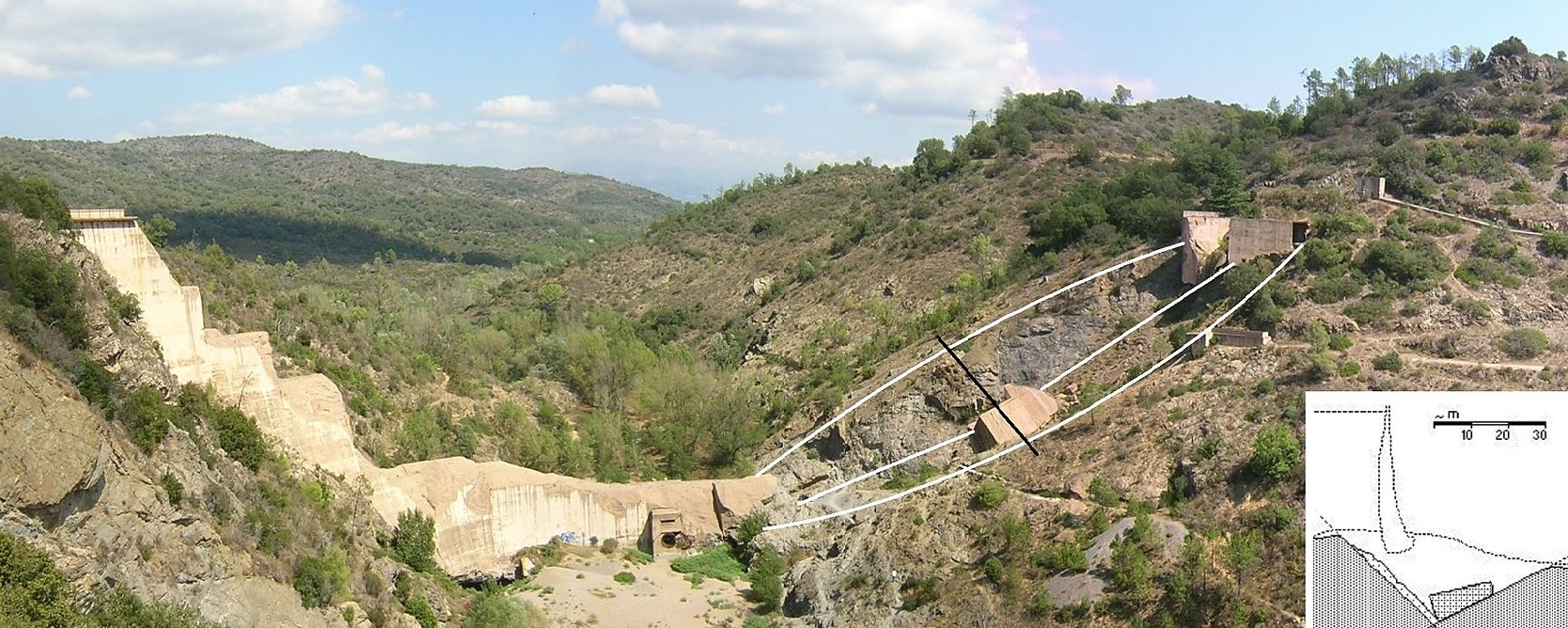
Apparently, there were so many women who lost their fiancés, that the event also ushered in the practice of posthumous marriage in France. It’s hard for me to imagine that out of 423 people, there were enough fiancés to warrant the need for a new law. I could assume that at least some of those couples were…dating yes, but not planning their weddings. Remember, that the invitations had to have been sent out, so there were a lot of couples in varying stages of wedding planning. Still, posthumous marriage is a very strange idea.
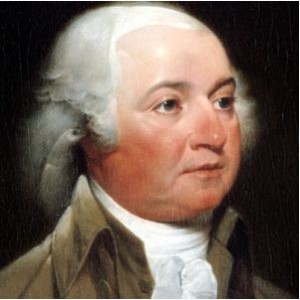 His Elective Majesty…sounds almost laughable, but it was almost the proper way to address the President of the United States, a fact that some presidents would probably have liked very much. Some presidents have tried to “rule” as a king would have, so they figure, why not buy in whole heartedly. One such president, who in fact made the original suggestion of title, was none other than, at the time, Vice President John Adams. The idea came from the fact that other heads of state are known by honorifics such as “His Excellency” and such, but United States presidents are only ever Mr President…or “sir” in a pinch. I’m sure that John Adams already had his sights set on becoming president at some point, and the second president of the United States seemed as good a time to run as any…or maybe he liked his own idea very much.
His Elective Majesty…sounds almost laughable, but it was almost the proper way to address the President of the United States, a fact that some presidents would probably have liked very much. Some presidents have tried to “rule” as a king would have, so they figure, why not buy in whole heartedly. One such president, who in fact made the original suggestion of title, was none other than, at the time, Vice President John Adams. The idea came from the fact that other heads of state are known by honorifics such as “His Excellency” and such, but United States presidents are only ever Mr President…or “sir” in a pinch. I’m sure that John Adams already had his sights set on becoming president at some point, and the second president of the United States seemed as good a time to run as any…or maybe he liked his own idea very much.
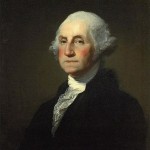
Apparently, thinking that the office of the President of the United States needed a title with more grandeur, Adams suggested that a president should be referred to as either “His Elective Majesty,” “His Mightiness,” or the slightly excessive “His Highness, the President of the United States of America and the Protector of their Liberties.” Just imagine any of those ideas. Every one of them make me giggle. Just take a moment to say (out loud) those titles in connection with the president…any president. With some presidents, any one of these titles is hilarious, and I’ll let you to decide to whom that statement applies, because these days we all have very specific opinions on the matter.
In those days, Washington was very aware of public fear about their newly won democracy slipping back into a 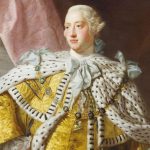 monarchy. They didn’t want this new nation to be too similar to England. They didn’t want this newly free nation to become once again ruled by a different kind of monarchy. So, they refused to allow the president to be titled as anything other than “The President of the United States.” They were right, of course, because the United States is not a “spin-off” of England…like England 2.0. The United States is a very unique nation…unlike any other, before her or after her. This nation was founded by people who refused to be told what to believe anymore. That is why they left England, where they were forced to live under a “state religion.” The nation was founded as “one nation, under God.” We would not have a king, because Jesus was our King of kings. We couldn’t give that title to a mere man.
monarchy. They didn’t want this new nation to be too similar to England. They didn’t want this newly free nation to become once again ruled by a different kind of monarchy. So, they refused to allow the president to be titled as anything other than “The President of the United States.” They were right, of course, because the United States is not a “spin-off” of England…like England 2.0. The United States is a very unique nation…unlike any other, before her or after her. This nation was founded by people who refused to be told what to believe anymore. That is why they left England, where they were forced to live under a “state religion.” The nation was founded as “one nation, under God.” We would not have a king, because Jesus was our King of kings. We couldn’t give that title to a mere man.
 The Alaskan Wood Frog is a unique amphibian, and not one I would probably be interested in, but this one is special. It’s not just that they live in Alaska, where it gets quite cold part of the year, and it’s not their strange looks…long skinny legs, orange eyes, or orange toes. Strange looking as that is, in the wild it is not that unusual. The unusual thing about these frogs is that they have a high tolerance to subzero temperatures. In fact, that cold tolerance is so strong that when winter sets in, the Alaskan Tree Frog begins to freeze. It doesn’t burrow underground, or migrate to the south, or any other evasive action, it just freezes in place, and in the position that it is in, as it freezes.
The Alaskan Wood Frog is a unique amphibian, and not one I would probably be interested in, but this one is special. It’s not just that they live in Alaska, where it gets quite cold part of the year, and it’s not their strange looks…long skinny legs, orange eyes, or orange toes. Strange looking as that is, in the wild it is not that unusual. The unusual thing about these frogs is that they have a high tolerance to subzero temperatures. In fact, that cold tolerance is so strong that when winter sets in, the Alaskan Tree Frog begins to freeze. It doesn’t burrow underground, or migrate to the south, or any other evasive action, it just freezes in place, and in the position that it is in, as it freezes.
As the Alaskan Wood Frog freezes, little ice crystals form all over its body, and it begins to look like a frog snowman…or iceman. The frog’s heart stops and blood no longer flows. All of its organs are frozen. I suppose I have basically just described the death of the Alaskan Wood Frog, but I have not. This tiny amphibian can survive being almost completely frozen during winter, only to miraculously come back to life as soon as spring arrives!
It is a type of hibernation, I suppose. It isn’t the kind of warm, cozy, sleep-off-the-fat type of hibernation that bears go through. For days, even weeks at a time during its period of winter hibernation, over 60 percent of the frog’s body freezes. The frog stops breathing and its heart stops beating. All of its physical processes, such as  metabolic activity and waste production come to a halt. “For all intents and purposes, they are dead,” said Don Larson, a Ph.D. student at Fairbanks, Alaska. As per his research, wood frogs can survive long winters where temperatures ranging between -48 Celsius to -64 Celsius. In fact, it can go through 10 to 15 freeze/thaw cycles over the course of a single season.
metabolic activity and waste production come to a halt. “For all intents and purposes, they are dead,” said Don Larson, a Ph.D. student at Fairbanks, Alaska. As per his research, wood frogs can survive long winters where temperatures ranging between -48 Celsius to -64 Celsius. In fact, it can go through 10 to 15 freeze/thaw cycles over the course of a single season.
As researchers have studied the amazing Alaskan Wood Frog, they have discovered the reason that the frog can survive such an extreme hibernation cycle. They have discovered that the reason for this the miraculous phenomenon is the high concentration of cryoprotectants in the wood frog’s tissues. What are cryoprotectants, you might ask. I wondered too. Cryoprotectants are “solutes – including glucose and urea.” They lower the freezing temperature of the frog’s cells, helping them survive. Exposure to subzero temperatures for a long time could cause cellular shrinkage in most animals. During the freezing process, water is pulled from the body’s cells to form ice, eventually sucking them dry and killing the cell. Cryoprotectants help the cells resist shrinkage in the wood frog, basically saving their lives. “The solutes tend to depress the freezing point. It limits the amount of ice that actually forms in the body at any part,” said Jon Costanzo of the Department of Zoology at Miami University in Ohio, who has been researching wood frogs for the past 25 years.
The research done into the Alaskan Wood Frog has helped medical researchers to discover ways that living  organs and tissues can be frozen and unfrozen without damaging them. That could be an amazing step forward in the area of organ transplants. Costanzo explained, “There’s an obvious parallel between what these frogs are doing to preserve all of their tissues simultaneously and our need to be able to cryopreserve human organs for tissue-matching purposes. If you could freeze human organs even for a short period of time, that would be a major breakthrough because then these organs could be shipped around the world, which would greatly [improve] the donor-matching process.” It amazing that the seemingly insignificant study of a frozen Alaskan Wood Frog could have such a great impact on the medical world of humans.
organs and tissues can be frozen and unfrozen without damaging them. That could be an amazing step forward in the area of organ transplants. Costanzo explained, “There’s an obvious parallel between what these frogs are doing to preserve all of their tissues simultaneously and our need to be able to cryopreserve human organs for tissue-matching purposes. If you could freeze human organs even for a short period of time, that would be a major breakthrough because then these organs could be shipped around the world, which would greatly [improve] the donor-matching process.” It amazing that the seemingly insignificant study of a frozen Alaskan Wood Frog could have such a great impact on the medical world of humans.

